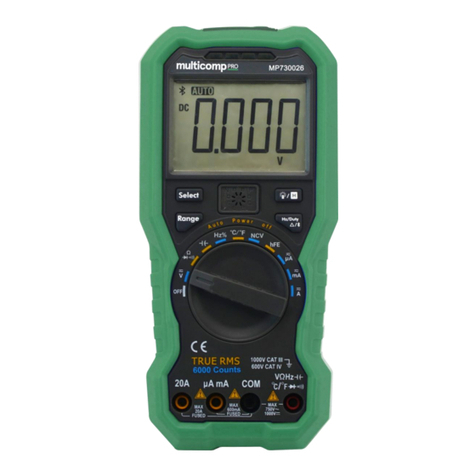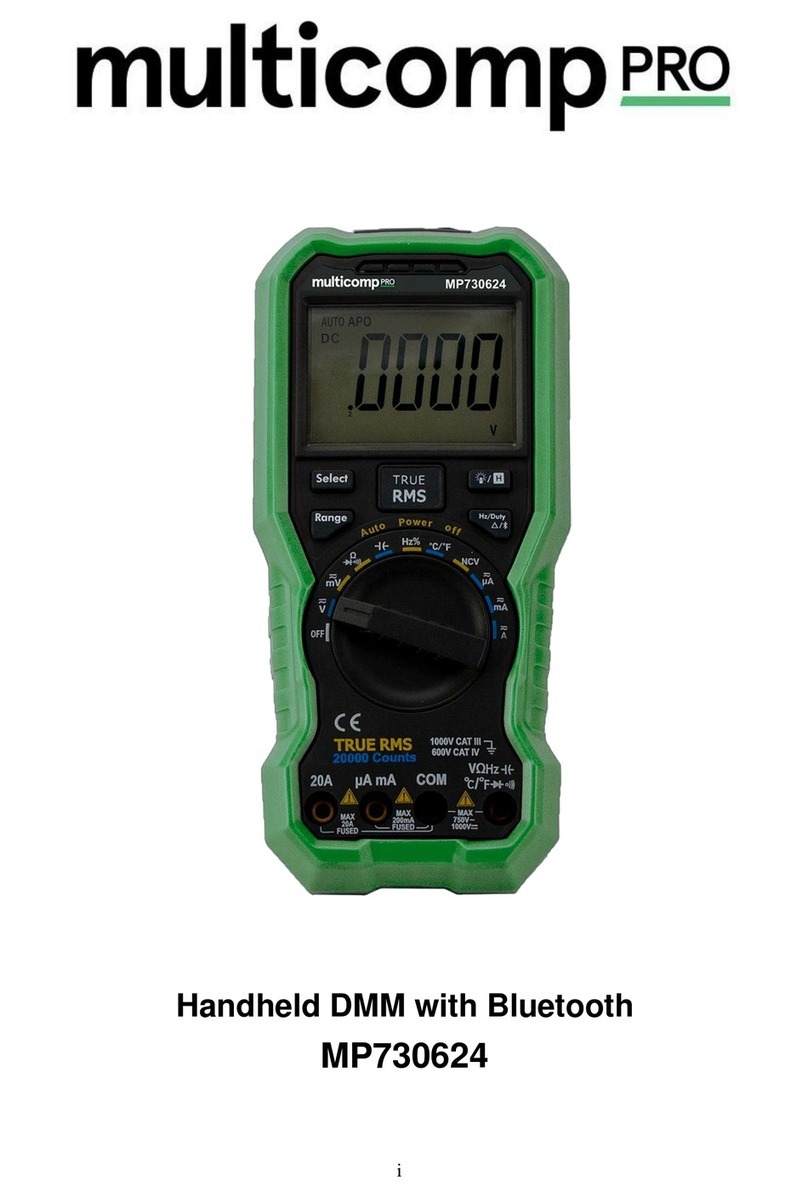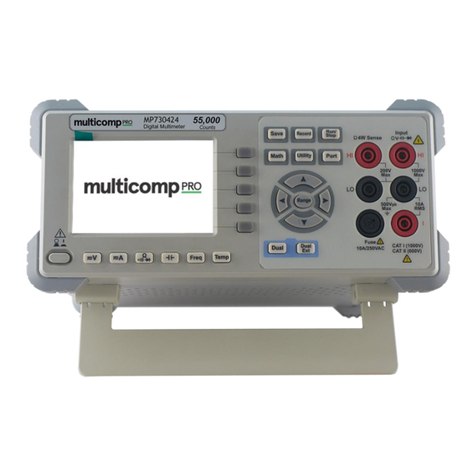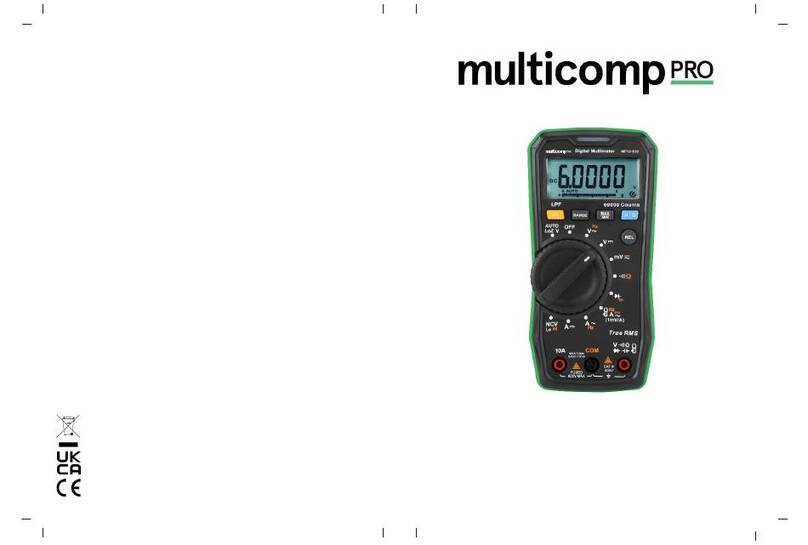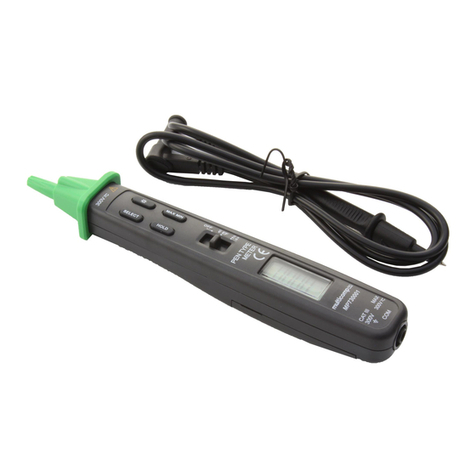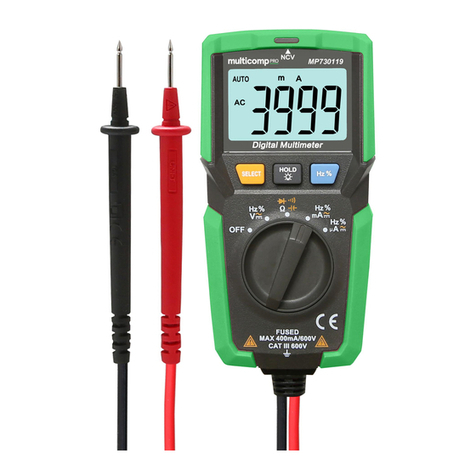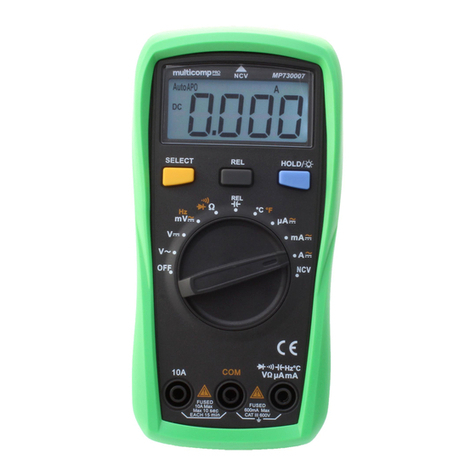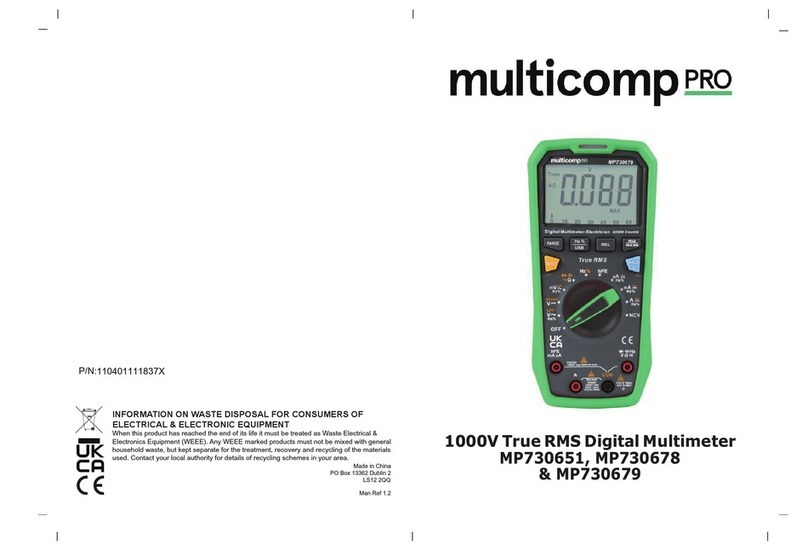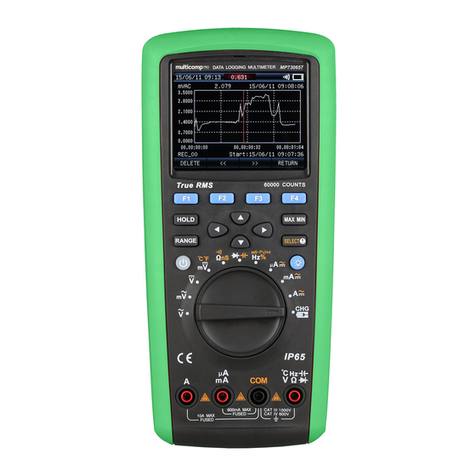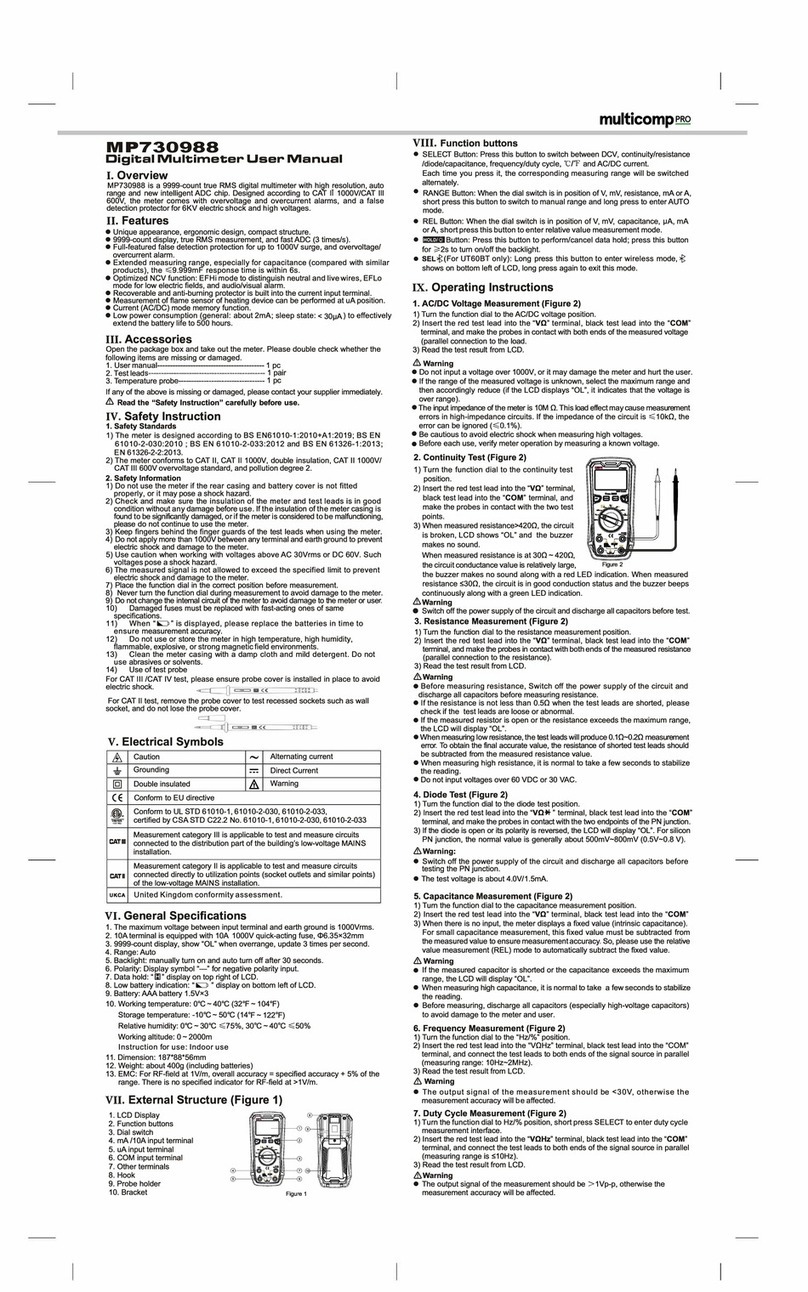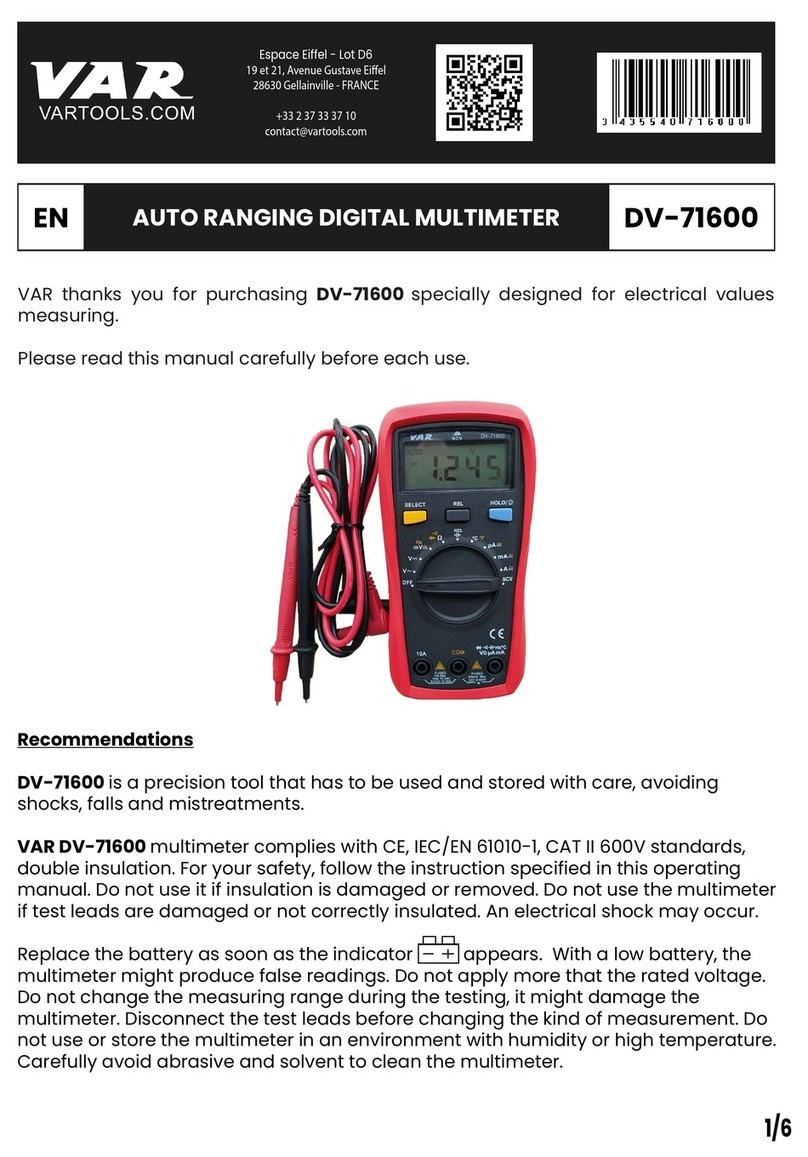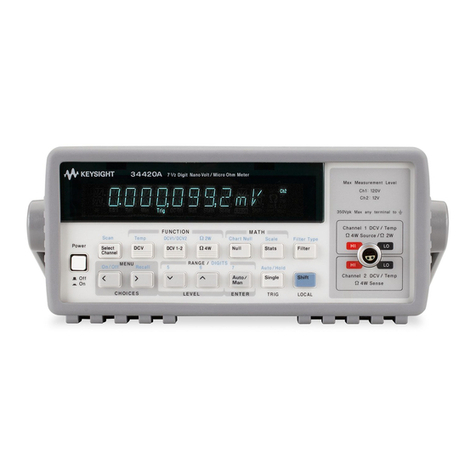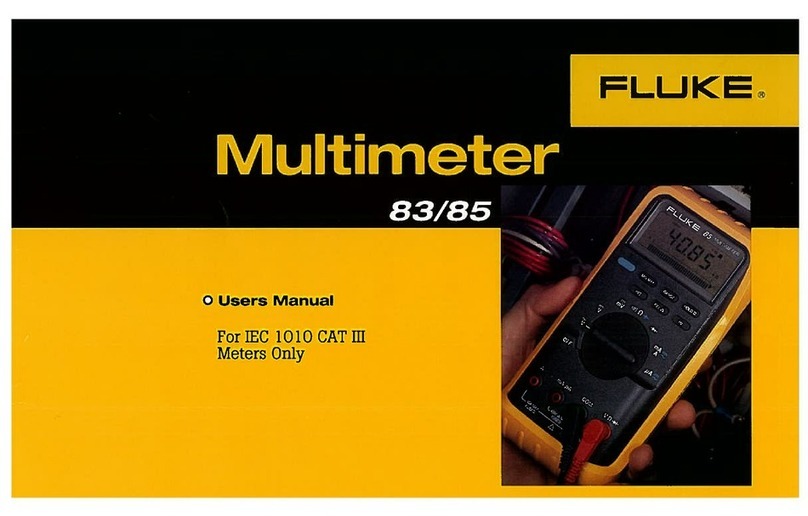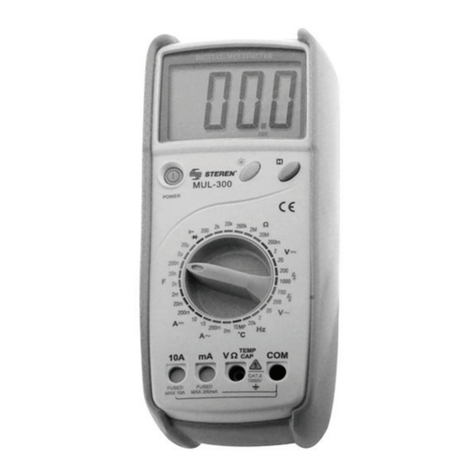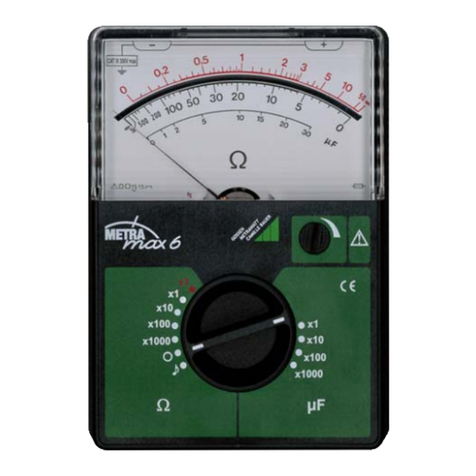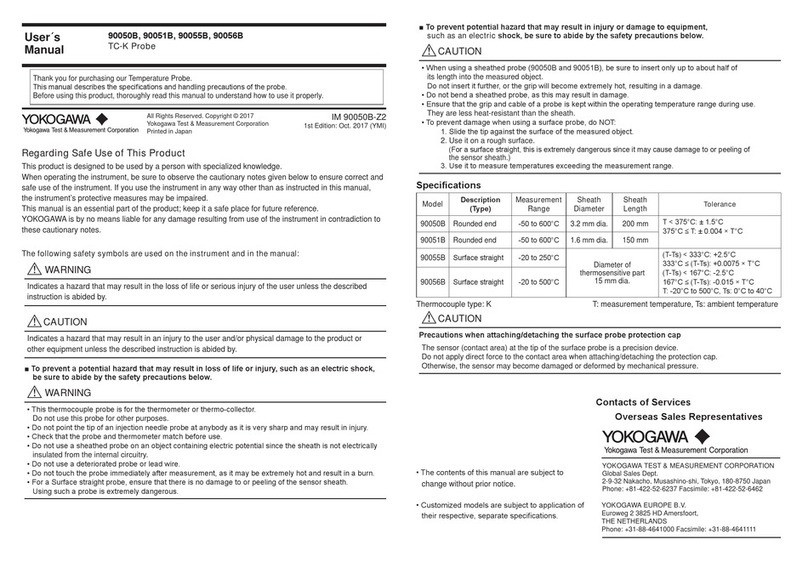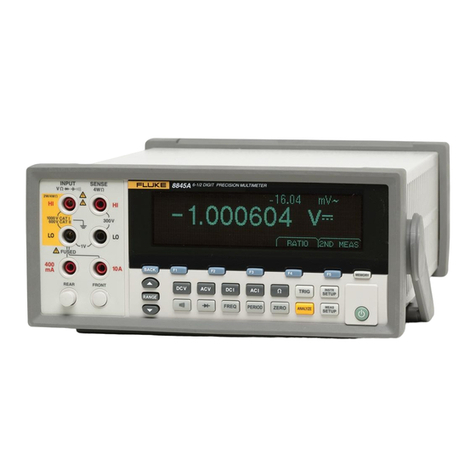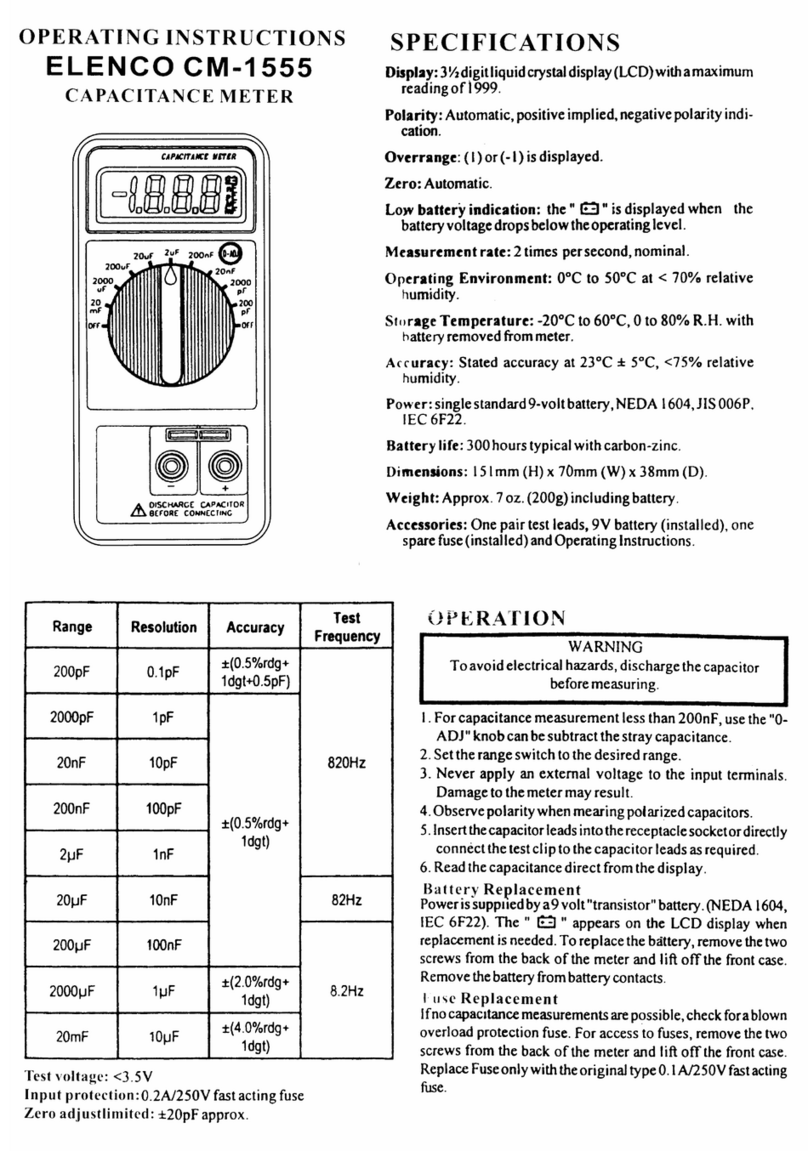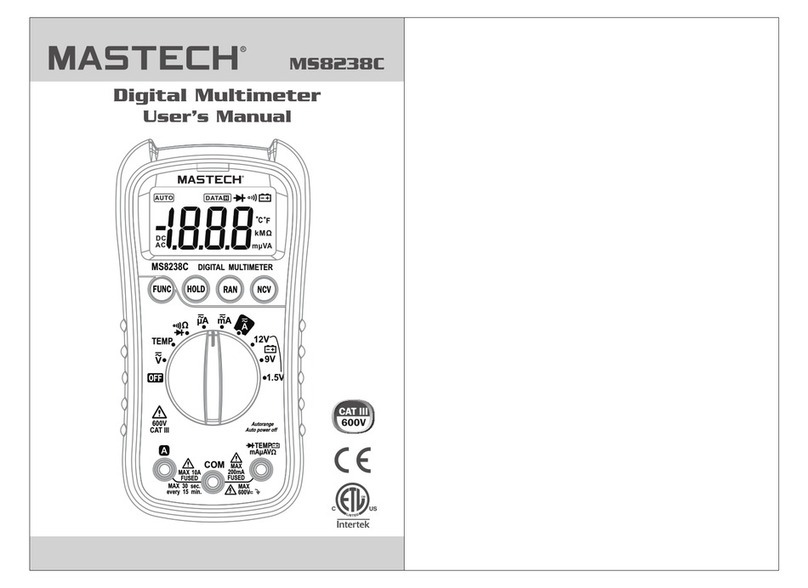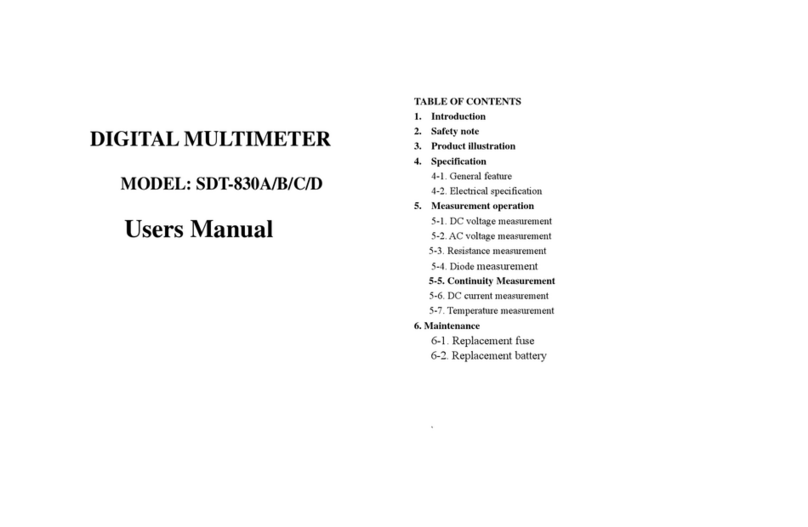
Page <2> V1.023/04/20
Newark.com/multicomp-pro
Farnell.com/multicomp-pro
Element14.com/multicomp-pro
Preface
Thank you for purchasing the new MP730425 residential multimeter. In order to use this product safely and correctly, please
read this manual thoroughly, especially the Safety Instructions.
After reading this manual, it is recommended to keep the manual at an easily accessible place, preferably close to the device,
for future reference.
1. Overview
The MP730525 is a pocket-size residential multimeter specially designed for home use. The compact structure makes it easy
to hold in one hand, and the EBTN screen allows users to obtain clear readings at maximum angle. The multimeter complies
with EN61010-1:2010, EN61010-2-030:2010, and EN61326-1 :2013 safety standards and is able to safely operate within the
CAT Ill 600V environment.
2. Features
• The battery status detection is automatically completed at the moment of booting: The green light indicates the normal
state; the yellow light indicates low battery; the red light indicates very low battery, and there is acousto-optic indication at
this time.
• Automatic identication of ACV/DCV measurement
• Intelligent non-contact electric eld detection, which distinguishes the weak electric eld by green light, the strong electric
eld by yellow light, and the super strong electric eld by red light
• Full featured protection
Before using the meter, please read the Safety Instructions carefully.
3. Safety Instructions
• Do not use the meter if the rear cover is not covered up, or it will pose a shock hazard!
• Before use, please check and make sure the insulation layer of the meter and test leads is in good condition without any
damage or broken wires. If you nd the insulation layer of the meter housing is signicantly damaged, or if you think the
meter cannot function property, do not use the meter.
• When using the meter, your ngers must be placed behind the nger guard ring of the test leads.
• Do not apply voltage over 600V between any meter terminal and earth ground to prevent electric shock and damage to the meter.
• Be cautious when the measured voltage is higher than 60V (DC) or 30Vrms (AC) to avoid electric shock!
• The measured signal is not allowed to exceed the specied limit to prevent electric shock and damage to the meter!
• The range switch should be placed in the corresponding position during measurement.
• Never change the range setting when measuring to avoid damage to the meter!
• Do not change the internal circuit of the meter to avoid damage to the meter and user!
• When the “ ” symbol appears on the LCD, please replace the batteries in time to ensure measurement accuracy.
• Do not use or store the meter in high temperature and high humidity environments.
The performance of the meter may be affected.
• Clean the meter casing with a damp cloth and mild detergent. Do not use abrasives or solvents!
• Measure known voltage with the meter to verify that the meter is working properly. If the meter is working abnormally, stop
using it immediately. A protective device may be damaged.
• If the equipment is used in a manner not specied by the manufacturer, the protection provided by the equipment may be
impaired.
• If the test leads need to be replaced, you must use a new one which should meet EN 61010-031 standard, rated CAT Ill
600V, 10A or better.
• Safety symbol description
